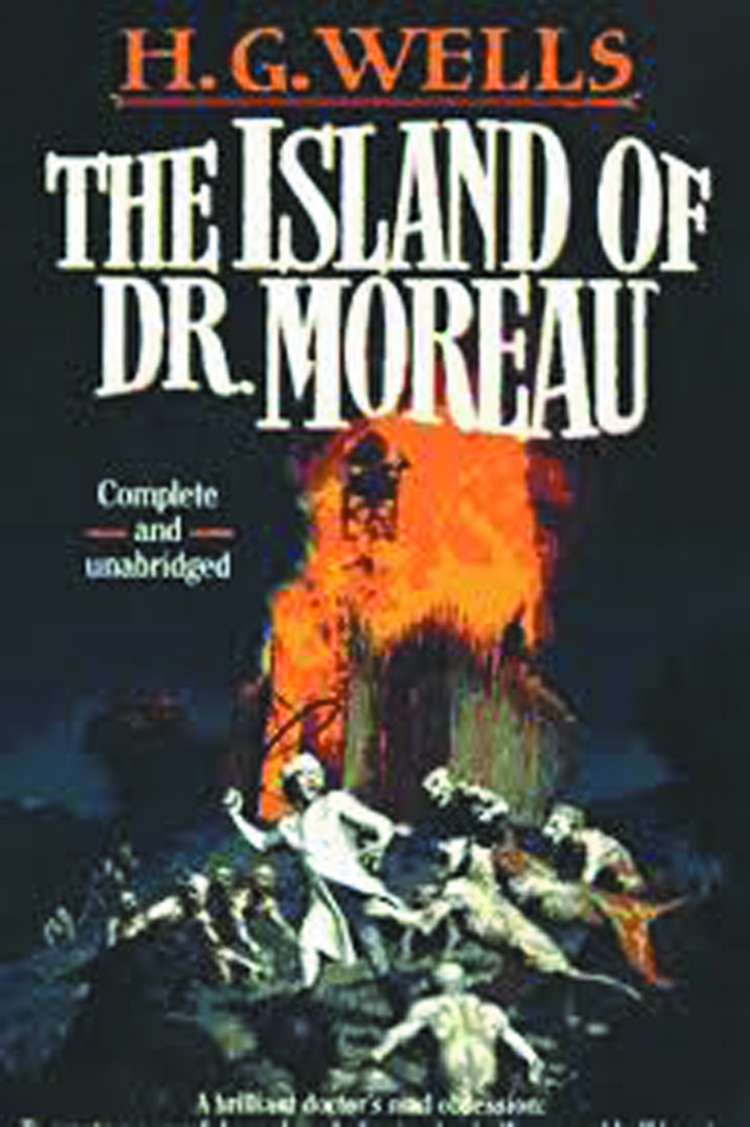The Island of Doctor Moreau
Published: 12:13 AM, 15 November 2018 Last Update: 12:18 AM, 15 November 2018
An allegory of the world around us

I bought a copy The Island of Doctor Moreau by H G Wells a few years ago from a bookstore in Dhaka New Market. Earlier I had read another couple of masterpieces by the same author titled The Time Machine and The War of the Worlds. Both are fascinating science fictions. I have so far read science fictions by some other writers but H G Wells entertains me most with his lucid language and gripping plots.
In The Time Machine H G Wells portrays a philanthropic scientist who invented an extraordinary contraption that he called a 'time machine' which he believed would turn time travel into reality. He traveled back and forth by millions of years with dreams in his mind to reach such a period of the future world where humans will have climbed the peak of enlightenment and happiness. But he was terribly shocked to find the helpless state of humans in the remote future under the suppressive reign of a horrid species of creatures called the Morlocks.
The abject plight of humans scared and hurt the scientist so much that he was about to lose all his pride for human civilization during the time he had left behind. However, the hostility of the Morlocks couldn't daunt the scientist. He started to think how to restore the superiority of human beings over all other creatures. Finally, he decided to stay back with the jeopardized people of that land to help them regain the lost glory of human race.
On the other hand, in The War of the Worlds the author shows the city of London suddenly invaded by aliens from Mars. It's a very exciting and fearsome work of fiction where readers go through gruesome details of Londoners getting swallowed by the demonic Martians. This book also presents the resilient spirit of humans who at the end of the story succeeded to eliminate the attackers with the application of superb human intellect, strategies and thought power.
The Island of Doctor Moreau sketches an eccentric scientist whose name is part of the book's title. Dr. Moreau, to view from a wider angle, tried to move into the shoes of God. He was obsessed with the macabre experiments of blending up the psycho-physical features of humans and beasts. He had been exiled to this island from England a few years earlier for this sort of anatomical activities known as vivisection. We get introduced to Dr. Moreau through the details given by Edward Prendick, a survivor of a shipwreck who was picked up by a sea cargo which was on its way to the mysterious island of Dr. Moreau. During Prendick's stay inside the home of Dr. Moreau on that island, he saw strange and horrible things that Dr. Moreau used to do in the name of anatomical assignments.
Dr. Moreau mutilated wild creatures in order to implant human organs and instincts into their bodies which he thought would transfigure these animals into better ones. Prendick met some striking instances of Dr. Moreau's conversions: the Leopard Man, the Hyena-Swine, the Swine Folk, the Ape Man, Bull Men, Horse-Rhinoceros, Wolf-Bear, Ocelot Man, Dog Man and the Monkey Man. He learnt of the Law and the House of Pain that were used to keep the beast folk under a constant state of panic and thus held them subjugated to their master.
Earlier I commented that Dr. Moreau in fact wanted to resemble God because he created a weird island of all those blended creatures over whom only his rule existed. He wanted to become the unanimous lord of the converted animals on that island. And indeed he was. He was feared and held in awe by his creations. But he failed in the long run. All these animals were gradually turning back into their wild forms which Dr. Moreau had sought to eradicate from their nature. The story ends with the unfortunate death of Dr. Moreau at the hands of the beast folk.
I found The Island of Doctor Moreau somewhat similar to Mary Shelley's Frankenstein which also tells us about the creation of a monster by a crackpot scientist. Both the books end in the same tragic way with the murders of the focal figures at the hands of their own creations. These two books match from another thematic angle-impractical ambitions can hardly avoid sever consequences. One more aspect of the book is quite noteworthy. When Edward Prendick came back to England, he found everything around him different.
As if all the civilized masses of London were moving, talking, behaving, even saying prayers like the beast folk he had seen on Dr. Moreau's island. H G Wells proves his fictional expertise with the portrayal of the savage island actually as an allegory to expose a bitter truth: human beings have made the world a far worse place than it was meant to be. The world around us today is so bleak and adverse with mistrust, vengeance and terror because of the derailment of human beings from the track God had shown them to follow.
All the masterpieces named above were turned into motion pictures in Hollywood quite a few times and received applause from viewers across the world, though I believe movies can't give the amount of pleasure one gets reading the original books.
The writer is a literary analyst for The Asian Age
The writer is a literary analyst for The Asian Age




